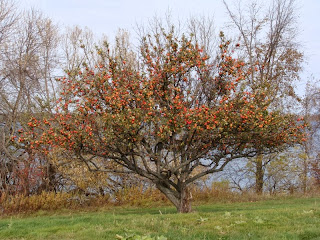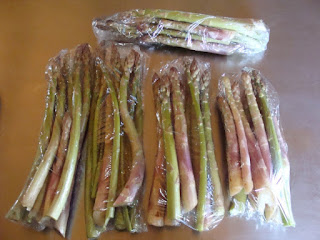An Outdoorsman’s view on the River
This week I am going to share an
experience that I never dreamed of having. Over the past few years I have
become friends with two couples on an Island. They are neighbors and have
adjoining property. The parcels are directly in front of the shipping channel
and the view is splendid. I had been invited to the island in the past to walk
its interior. There were song birds, herons and even eagles raising a brood
there. Also there just happens to be a few deer present, as well as coyote’s.
As summer came to a close, I was
handed a permission slip to access the island… to hunt. “Don’t forget to bring
you’re camera, you never know what you will see here. You are welcome to come
over anytime.” The sincerity and generosity of the invitation meant a great
deal to me. I know that they each enjoy watching deer during the summer. Most
deer watchers, who do not hunt, are generally skeptical. Hunters are often seen
as blood thirsty killers instead of conservationists. I’ll not argue the fact
that there are some hunters, who just go out to shoot, stomp and disregard land
owners. I have known very few in that class, all of my acquaintances are highly
ethical. Our fathers drilled in the importance of safety first and shooting
last. We learned that a day in the woods is a privileged event. Those days were
only possible because the land owners trusted us. That trust was earned by
showing overwhelming respect.
I have often wondered what it would
be like to hunt on an island. I know that Native Americans used this same
island when it was still a wilderness. They had camps there, where they
gathered food, grew gardens and survived off of the land. Just the thought of
walking across those same faded foot prints put me into a dream state. Imagine
having a partial island to wander. There would be acres of trees, brush and
open fields overlooking our marvelous river. Yes, I was as excited as I was
thankful for this rare opportunity.
As you may know the river in the fall
is often belligerent. Windy days dominate and calm days are scarce. As excited
as I was, I had to wait for a calm day with a soft breeze, to cross to the
Island. Some days started out promising, but when I checked the incoming
weather, the waiting had to continue. Usually by 9:00 AM the wind returned to
churn the river top and create white caped waves. Finally on the 5th
of November a southern breeze blew and my day to experience an Island hunt was
at hand. I spent an hour loading my small puddle jumper boat with equipment. I
collected a life preserver, seat cushion, rope, deer cart, gun, rain gear,
backpack, water and a lunch. I double checked everything and then added some
matches just in case I had to spend the night. You never know, the river can
change in an instant. Being on an island in November without a fire, would not
be wise.
I had a broad smile on my face,
during the journey over. I took my time to enjoy the rolling waves, listening
to the water splash off of the hull. The first craft I saw was a Coast Guard
boat heading up-river in the channel. The second one was anchored with a string
of decoys in front of it. They were duck hunters with a boat covered in
camouflage. It looked like a very comfortable proposition to hunt safely from.
With a setup like that they could withstand some harsh weather without ever
getting wet. That was not a worry on this day; it was bright, sunny and dry.
I disembarked, stretched and looked
around at the wide open space. The Island of summer had faded to browns with
remnants of color clinging to scattered trees. A lone apple tree caught my eye.
The fruit was like a burst of life with yellows, reds and gold shinning in the
sun. I could not help it; I reached up for one of the perfectly round apples
and took a bite. You never know how an heirloom apple is going to taste. This
one tasted exactly like the apples I remember eating along the railroad tracks,
where I grew up. I stowed another in my backpack for my bride to enjoy.
I followed the shoreline from the
apple tree and up over a small gully surrounded by willow trees. The cover was
dense and I could see where deer had been bedded. My steps were silenced by
soft grass and my progress slow. I wanted to see if I could get close to a
bedded deer without alarming it. My slow walk took me through a large field
loaded with goldenrod. I paused to admire the river. The expanse of blue water
was rippled with a shimmering glow from the sun aloft. As I turned to begin a
climb up a ridge, a doe jumped from her bed and raced up the incline. She stopped
to look back at me from a high advantage point. I sat still and waited for her
curiosity to wane. She stepped out of sight as she wandered back down the ridge,
into safe cover.
I followed the route that the deer
took and ended up on the high spot overlooking the river. A large rock was
conveniently deposited by glacial activity centuries ago, right on the top. I
decided to sit there and have lunch. Many thoughts went through my mind as I
enjoyed a November picnic, all alone. This rock may have had a Native American
taking a break under the same sun, many years ago. The island would have been
full of mature timber and the view much different. How high were those trees
and how old were they? Did the natives have to contend with cougars or wolves?
I’ll bet that there were not too many 57 year old natives traipsing about. I
would have been considered an elder, long in the tooth as it were. It is much
more likely that I would have been a bag of bleached bones, long forgotten.
The sun came and went as clouds
drifted along. Several times I heard the whistle of a train in Canada. Again I
was reminded of the old Railroad that I wandered as an adventurous youth. There
were times back then when I was a train robber, an Indian, or a colonist
settling the new world. My spirit intertwined with the past often, as history
was a consummate friend. This spot where I sat was a friendly place, a good
place, one of a kind. The rock became irritated with me and became
uncomfortable. I stood to stretch and my feet lead me along the ridge further.
A stand of sumac was on the top of
the ridge. There were four deer beds, where the grass had been laid flat by
slumbering bodies. There was no way of knowing if I had disturbed them or if
they had been there a few days before. I silently walked down the slope to peer
into a clear area, under some thorn apple trees. Scanning the area I could see
nothing more than weeds and brush. I used a call to make three soft buck
grunts. A big doe rose from the earth as if a magician had just conjured her
up. She stood and stretched for just a moment, only forty yards away. I had to
make a quick decision. Her thick neck held her head high above the weeds. This
doe would be a burden to try and get off of the island; she looked to be over
two hundred pounds. This was only the second deer that I have seen of that
size, in all of my years.
She would be the last deer that I saw
on this outing. I spent another hour walking and sitting in a grove of hickory
trees. A lone woodpecker hammered and clamored up the scaly bark of a hickory,
next to me. A flock of blue jays cascaded through the grove chattering and
gathering nuts. The leafless trees in front of me opened up a grand view of the
river and a passing ship. The sun was beginning to settle into the trees and
daylight was slipping away. I walked out of the woods at a normal pace,
unconcerned at spooking deer any further. I spent four and a half hours on this
island. Wandering about in nature is always rewarding… this day was
exceptional.




